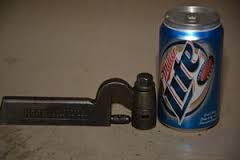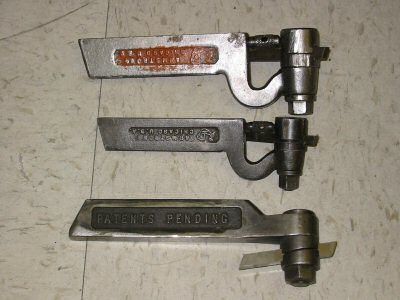partsproduction
Titanium
- Joined
- Aug 22, 2011
- Location
- Oregon coast
Most of you have doubtless seen and many have used these. I bought one for one of my shapers recently, but the way it works seems self defeating.
It is an Armstrong S-51 holder like this one;

What I am not sure of is the function of the screw jack at the bottom. Is it for roughing, and before finishing is screwed back to allow spring? Or is it supposed to always be pressing against the back of the goosneck?
Thanks,
parts
It is an Armstrong S-51 holder like this one;

What I am not sure of is the function of the screw jack at the bottom. Is it for roughing, and before finishing is screwed back to allow spring? Or is it supposed to always be pressing against the back of the goosneck?
Thanks,
parts







